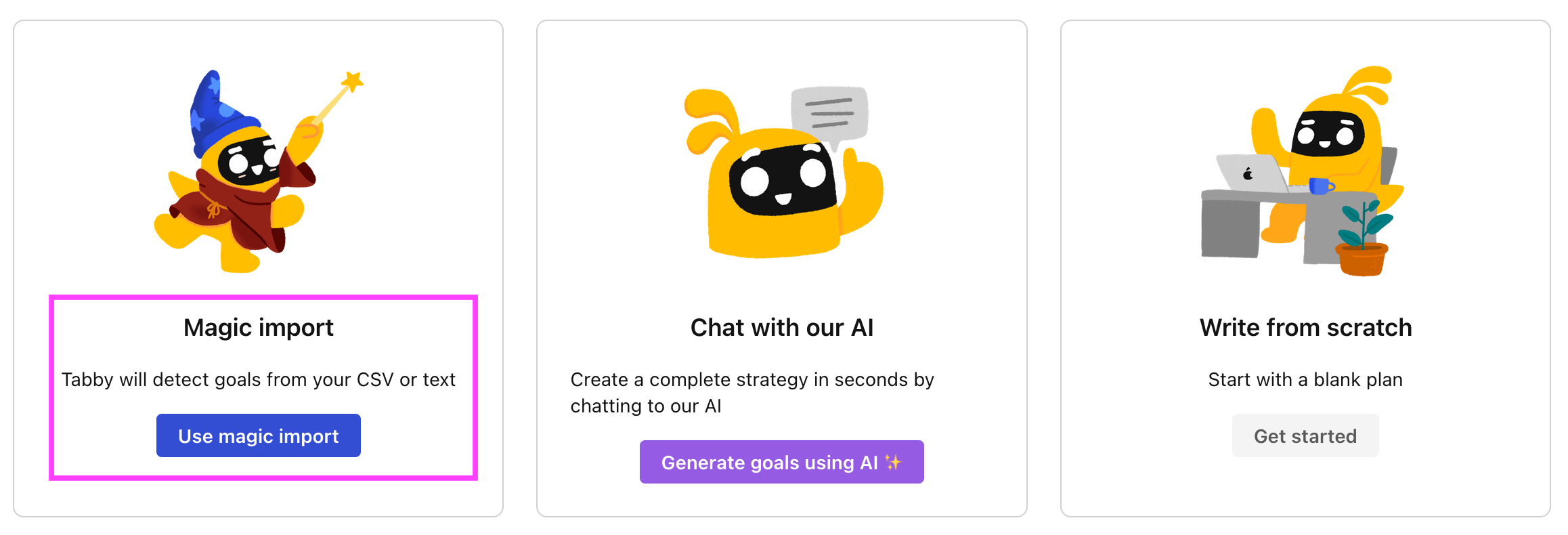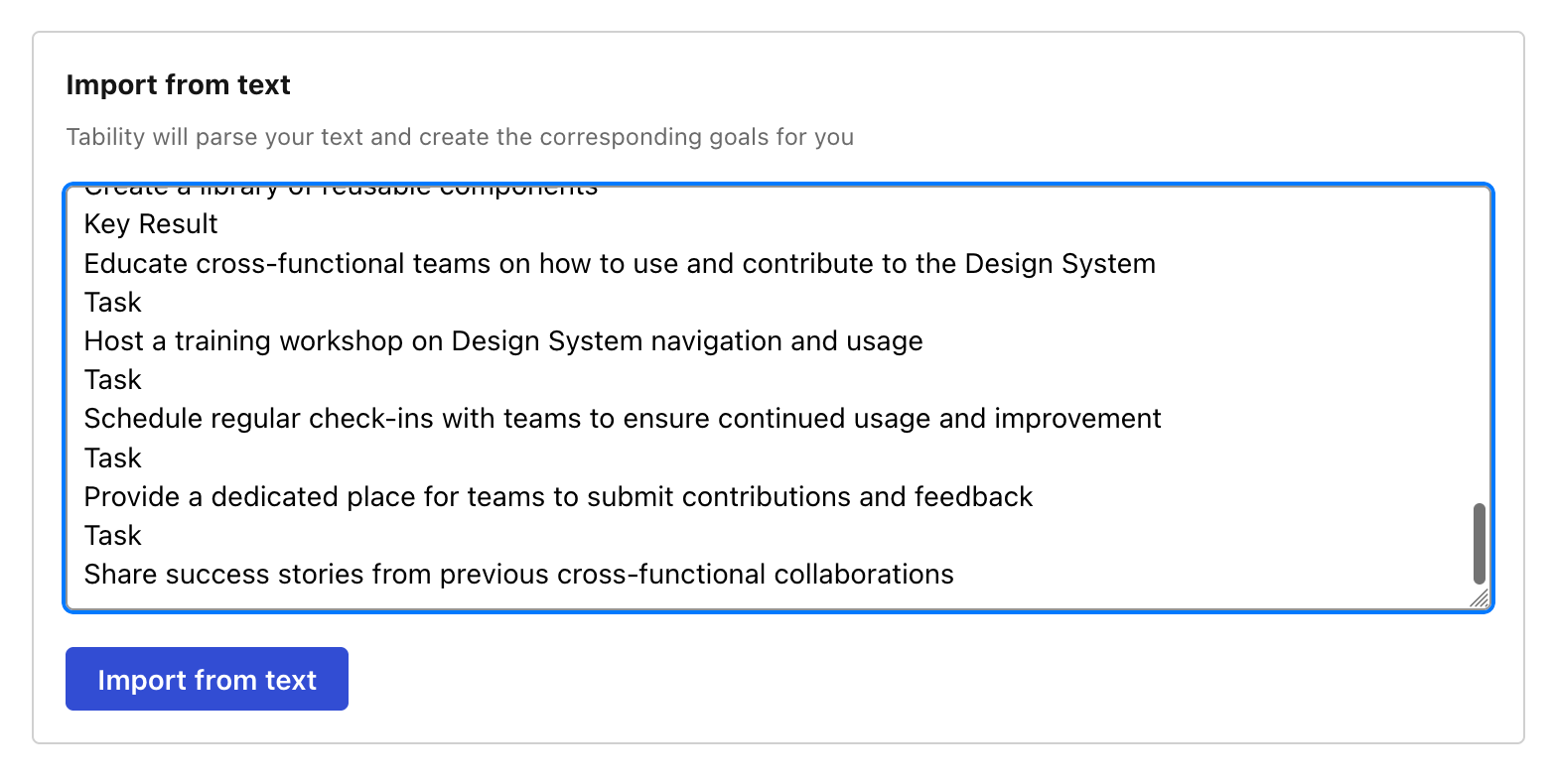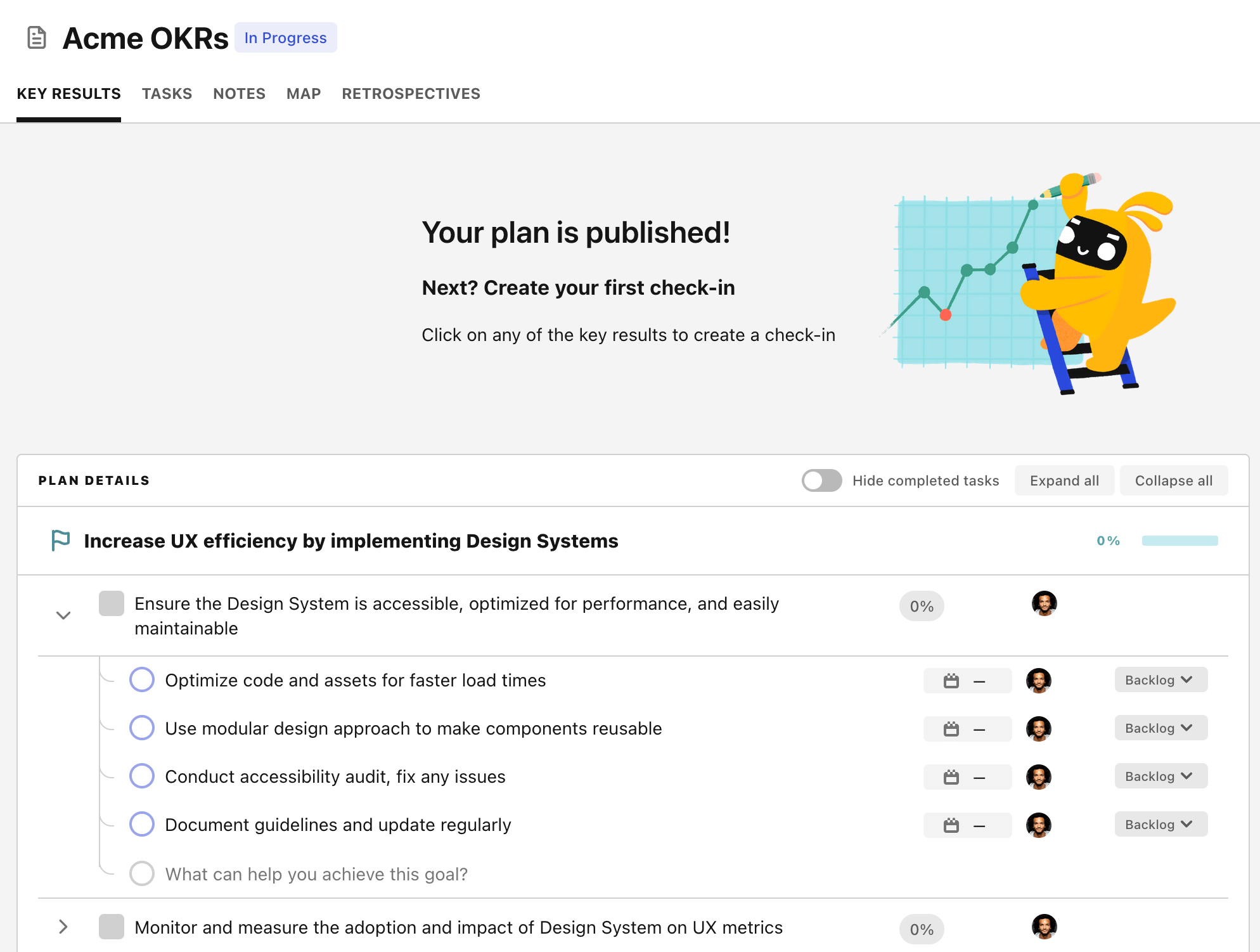OKR template to maximize NIAT and escalate revenue flow
Your OKR template
The second objective for achieving increased NIAT is enhancing product portfolio profitability by 25%. This requires a comprehensive review of the existing product portfolio for cost efficiency, strategically optimizing pricing, and innovation of new products with higher margins.
Reducing operational costs by 15% is identified as the third objective to boost up the NIAT. It underlines the need to implement energy-saving measures in facilities, evaluate current processes for potential inefficiencies and negotiate better deals with suppliers to bring down prices.
Overall, this OKR is designed to blend client acquisition strategies, product portfolio refinement, and operational cost reduction to significantly increase the company's net income and revenue flow.
ObjectiveMaximize NIAT and escalate revenue flow
KRIncrease new client acquisition by 20%
Develop targeted marketing materials for prospective clients
Train staff in advanced sales techniques
Implement referral incentives for existing clients
KREnhance product portfolio profitability by 25%
Review existing product portfolio for cost efficiency
Implement optimized pricing strategies
Innovate new products with higher margins
KRReduce operational costs by 15%
Implement energy-saving measures in facilities
Evaluate current processes for potential inefficiencies
Negotiate lower prices with suppliers
How to edit and track OKRs with Tability
You'll probably want to edit the examples in this post, and Tability is the perfect tool for it.
Tability is an AI-powered platform that helps teams set better goals, monitor execution, and get help to achieve their objectives faster.
With Tability you can:
- Use AI to draft a complete set of OKRs in seconds
- Connect your OKRs and team goals to your project
- Automate reporting with integrations and built-in dashboard
Instead of having to copy the content of the OKR examples in a doc or spreadsheet, you can use Tability’s magic importer to start using any of the examples in this page.
The import process can be done in seconds, allowing you to edit OKRs directly in a platform that knows how to manage and track goals.
Step 1. Sign up for a free Tability account
Go tohttps://tability.app/signup and create your account (it's free!)
Step 2. Create a plan
Follow the steps after your onboarding to create your first plan, you should get to a page that looks like the picture below.

Step 3. Use the magic importer
Click on Use magic import to open up the Magic Import modal.
Now, go back to the OKR examples, and click on Copy on the example that you’d like to use.

Paste the content in the text import section. Don’t worry about the formatting, Tability’s AI will be able to parse it!

Now, just click on Import from text and let the magic happen.

Once your example is in the plan editor, you will be able to:
- Edit the objectives, key results, and tasks
- Click on the target 0 → 100% to set better target
- Use the tips and the AI to refine your goals
Step 4. Publish your plan
Once you’re done editing, you can publish your plan to switch to the goal-tracking mode.

From there you will have access to all the features that will help you and your team save hours with OKR reporting.
- 10+ built-in dashboards to visualise progress on your goals
- Weekly reminders, data connectors, and smart notifications
- 9 views to map OKRs to strategic projects
- Strategy map to align teams at scale